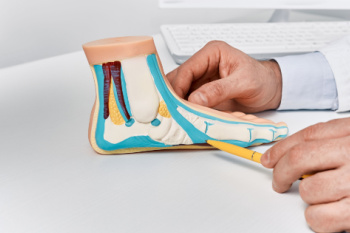
Flat feet, a common condition where the arches of the feet are lower than usual or nonexistent, can pose challenges for runners. While flat feet can be inherited, they can also develop over time due to factors like age, injury, or wear and tear. Running with flat feet may lead to overpronation, where the feet roll excessively inward during the running gait, potentially causing discomfort or injury. However, many runners with flat feet can still enjoy running by taking certain precautions. Selecting running shoes with adequate arch support and stability can help alleviate strain on the feet and ankles. Additionally, incorporating strengthening exercises to target the muscles supporting the arches can improve foot mechanics and reduce the risk of overpronation. Gradually increasing mileage and incorporating rest days into training schedules can also help prevent overuse injuries. By understanding the causes of flat feet and implementing appropriate strategies, runners with flat feet can continue to pursue their passion while minimizing discomfort and reducing the risk of injury. If you have flat feet and enjoy running, it is suggested that you consult a podiatrist who can guide you toward additional comfort techniques.
Flatfoot is a condition many people suffer from. If you have flat feet, contact Deann Hofer Ogilvie, DPM from Ascend Foot & Ankle Center. Our practitioner will treat your foot and ankle needs.
What Are Flat Feet?
Flatfoot is a condition in which the arch of the foot is depressed and the sole of the foot is almost completely in contact with the ground. About 20-30% of the population generally has flat feet because their arches never formed during growth.
Conditions & Problems:
Having flat feet makes it difficult to run or walk because of the stress placed on the ankles.
Alignment – The general alignment of your legs can be disrupted, because the ankles move inward which can cause major discomfort.
Knees – If you have complications with your knees, flat feet can be a contributor to arthritis in that area.
Symptoms
- Pain around the heel or arch area
- Trouble standing on the tip toe
- Swelling around the inside of the ankle
- Flat look to one or both feet
- Having your shoes feel uneven when worn
Treatment
If you are experiencing pain and stress on the foot you may weaken the posterior tibial tendon, which runs around the inside of the ankle.
If you have any questions please feel free to contact our office located in Lafayette, CO . We offer the newest diagnostic and treatment technologies for all your foot and ankle needs.
